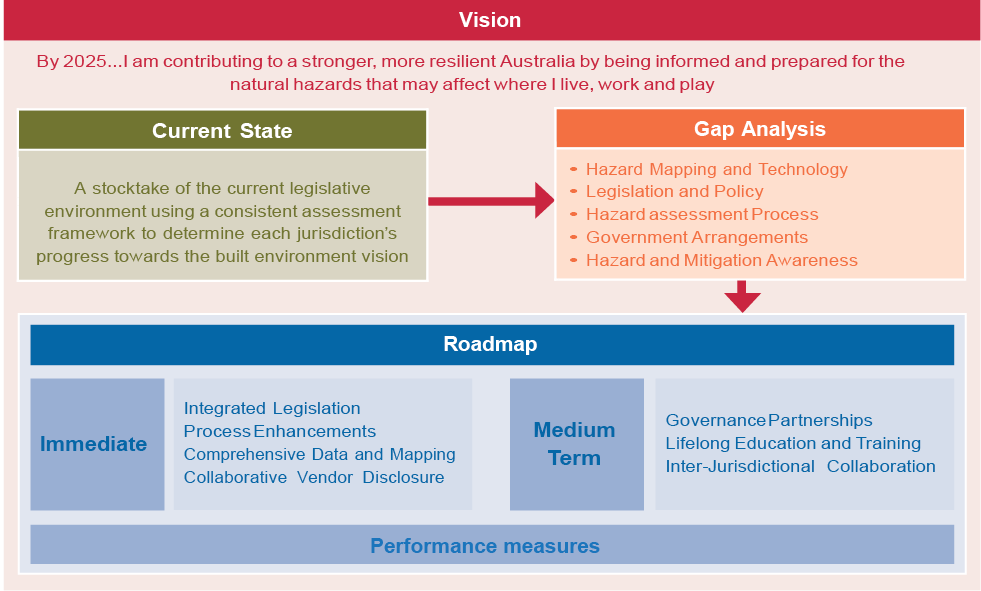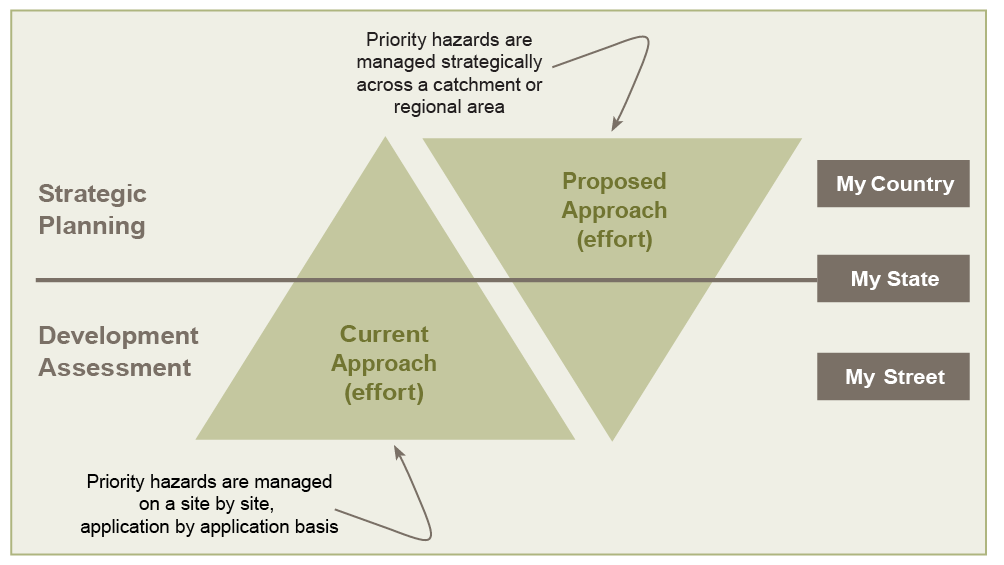
Natural disasters are a regular occurrence across the Australian continent, causing more than $1 billion damage each year to homes, businesses and the nation’s infrastructure, along with serious disruption to communities. In response, there has been significant investment by all spheres of government to recover and reconstruct communities devastated by natural disaster events. The National Strategy for Disaster Resilience acknowledges the importance of land use planning and building codes that take into account local risks.
The Enhancing Disaster Resilience in the Built Environment Project was undertaken by the Land Use Planning and Building Codes Taskforce, a group formed by the National Emergency Management Committee that includes land use planning and building expertise from across Australia. The Project’s objective is to enhance disaster resilience in the built environment by establishing a common understanding of land use planning and building polices, regulations and codes across Australia, undertaking a Gap Analysis on the current instruments and preparing an issues paper that provides a Roadmap for key improvements to be implemented.
Moving forward, the Roadmap is required to be implemented across all Australian jurisdictions which will result in the agreed built environment vision being achieved. The Project outline is featured below.

Importantly, all jurisdictions agreed that there needs to be a change in the current approach within Australia where investment is focused on land use planning and building in response to natural disaster events. The outputs of the Project propose a fundamental shift in this strategy, with funding and effort to be proactively applied to enhancing land use planning and building regulation, processes, access to information, governance, education and collaboration (see figure below).

The Attorney-General’s Department sponsors the Young Planner of the Year award at the Planning Institute Australia’s National Congress. The relevance of the conference is that we need to get smarter in our planning approaches so we create safer and more sustainable communities. The 2012 winner for the Young Planner of the Year was Angela Forrest who has worked extensively with local government, state government and private developers in Tasmania, which has resulted in her development of high level and objective perspective of the role of planning in Tasmania.

Left to right: Dyan Currie, PIA National President; Angela Forrest, Young Planner of the Year; Raelene Thompson, AEMI – Executive Director.
One of the key actions required to facilitate this shift is to establish genuine collaboration between the functions of emergency management, land use planning and building. With this collaboration in place, learnings from natural disaster events would be swiftly acknowledged and reflected within dynamic land use planning and building regulations, governance and processes.
The seven Roadmap projects are: Integrated legislation, process enhancement, comprehensive data and mapping, collaborative vendor disclosure, governance partnerships, inter-jurisdictional collaboration and lifelong education and training.
The ‘Lifelong education and training’ project highlights that a key outcome is for primary, secondary and tertiary education and professional certification courses to include content on natural hazard management. Correct implementation will ensure that our children who grow into becoming our young industry professionals will have an enhanced understanding of the subject matter.
Angela was nominated for her work on the Craggy Ridge estate in Legana, Tasmania. The development vision for this project was centred on sustainability, with a focus on minimising environmental impact and maximising opportunities for community interaction. Community consultation formed a critical aspect of the project’s components.
Land use planning will continue to be promoted as an important consideration in preparing our communities to become more disaster resilient against future natural hazards. Through the findings from the Project and the impending implementation of its findings, the path forward towards achieving a stronger, more disaster resilient Australia is now much clearer.
If you would like any further information on the Project, please contact Co-Chairs of the either Brendan Nelson, General Manager, Land Use Planning, Queensland Reconstruction Authority (Co-Chair of the NEMC LUPBC Taskforce) or Peter Allen: Executive Director, Statutory Planning Systems Reform, Department of Planning and Community Development, Victoria.